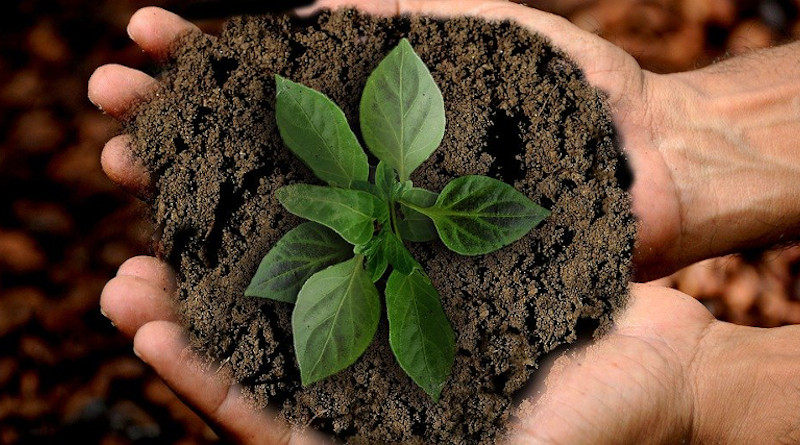Aquaponics Can Help In Fight Against Poverty With Healthy Food – OpEd
Recirculation farms using aquaponics are a socially responsible farming method and business. They support the use of renewable energy, recycle water and waste, and provide local food.
Aquaponic – hydroponic – systems are much more productive and use up to 90 percent less water than conventional gardens. Other advantages include no weeds, fewer pests, and no watering, fertilizing, bending, digging or heavy lifting etc. There are different types of aquaponics, such as Media Bed (using a substance such as lava rocks or other medium other than soil for raising plants and bacteria), Raft (using foam boards with cut outs to place planter pots floating in fish water) and NFT – Nutrient Film Technique -(using PVC pipes or similar materials with cut outs for plants using a continuous flow of water).
Fish and plants are grown in a symbiotic balance. Wastes from the fish provide nutrients for the plants, and in turn the plants filter the water for the fish. It is a revolutionary combination of the best of aquaculture and hydroponics and an amazingly easy way to raise fish together with organic vegetables, greens, herbs and fruits.
This project was inspired by the escalation food costs due to a poor economy, the undesirable genetic modifications of produce, and the indiscriminate use of chemical fertilizers and pesticides in the growing processes of most our food, as well as the growing shortage of clean agricultural land that has not been contaminated by excessive fertilizer use and other pollutants.
Lawn hydroponics systems are easy to instal, with just a small space of lawn needed. These incorporate an aquarium with fish or any aquatic animal (like tortoises etc.) as the living creature aquatic animals utilize food and their metabolism produces waste material. Bacteria break down the aquatic animal’s waste products into plant nutrients in the water. The water is then used to irrigate the plants. It takes a month or so for the fish/bacteria system to establish itself before suitable environments for growing aquatic plants can be successful. The plants use the nutrients and keep the water for the fish clean. This food cycle continue and provides food to both aquatic animals and plants, resulting in a complete hydroponic system. Using this system, crops are constantly harvested and the system feeds and waters itself in a sustainable ecosystem approach to food production.
Additionally, the system can be surrounded with a greenhouse and allow beneficial insects in crops area so that they help in the production of decomposition.
Growing your own food by using natural and harmless materials is the best way to improve the environment. Additionally, if we grow our own food we know which type of compost we are using, in this way our soil is not being harmed and that is a further benefit to us in food chain reactions. Growing food locally and naturally without the use of harmful pesticides and chemical fertilizers is interesting from both an economical and environmental point of view.
As no soil is needed with aquaponics, the water stays in the system and can be reused, thus lowering water costs. Once a biological balance is achieved, it is self-sustaining, and only requires the fish to be fed. In this established ecosystem each part is dependent on the other, so care must be given in combining the amount and number of fish, bacteria, and plant material so that this balance is achieved. Too many fish will lead to muddy water that will not support the fish, and not enough fish will fail to provide enough food for the plants. Without enough bacteria, the fish waste will not be converted to food for the vegetables.
No nutrition pollution is released into the environment because of the controlled system and no herbs cause damage or negative impact on crops or plants. They produce healthy enriched anti oxidant food.
Stable and high yields, flowers, fruits, herbs, and vegetables can all be successfully grown by this method. It is also an ideal method to use for creating a wildlife garden in the backyard to enjoy the natural beauty nature can only provide, while at the same time benefitting the environment.

